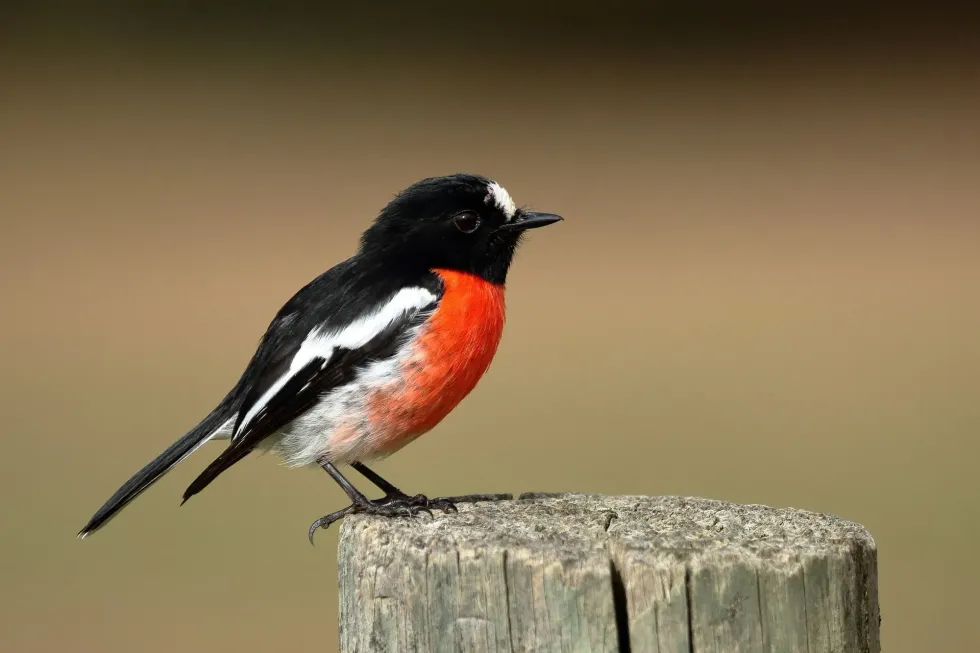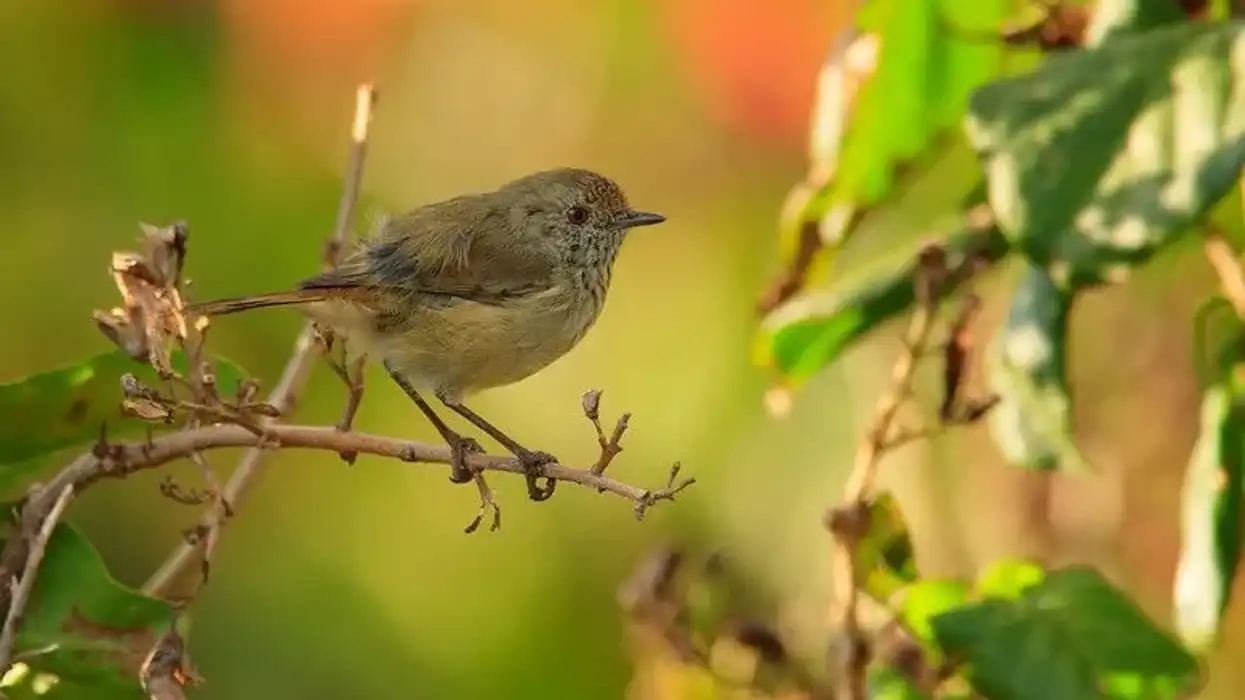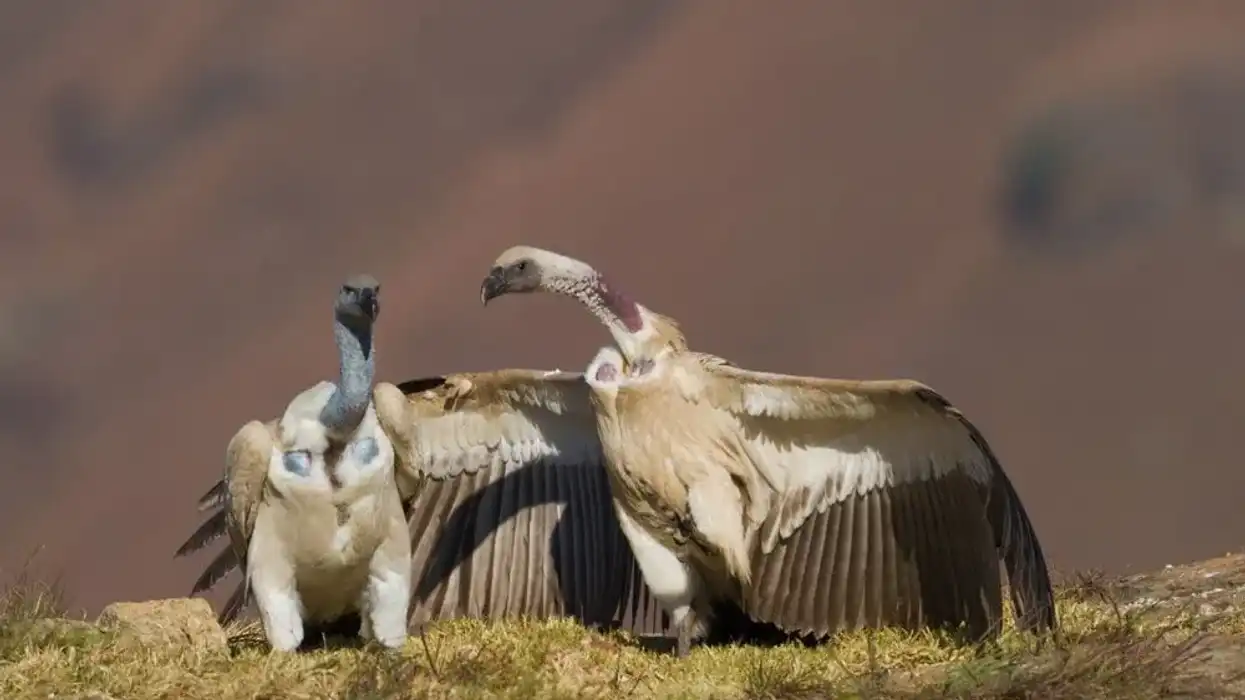The scarlet robin (Petroica boodang) is an endemic bird species of South Australia. In the past, the scarlet robin (Petroica boodang) and the Norfolk Island robin (Petroica multicolor) were considered the same species because both the male birds looked strikingly similar to one other.
But later, they were separated, and the Norfolk Island robin was given the name Petroica multicolor. Right now, the Norfolk Island robin (Petroica multicolor) is considered an Endangered species because they are only found in Norfolk Island and nowhere else.
Here we have lots of scarlet robin facts that you will definitely enjoy. Let's have a look at these facts. If you like these facts do read Japanese robin facts and marvellous spatuletail facts.
Scarlet Robin Interesting Facts
What type of animal is a scarlet robin?
The scarlet robin (Petroica boodang) is a bird species that are originally found in Western Australia.
What class of animal does a scarlet robin belong to?
Scarlet robins belong to the class of Aves and the family of Petroicidae.
How many scarlet robins are there in the world?
There is no exact estimate of the population of scarlet robins found in the world. The population of the species seems to be stable as they are of Least Concern according to the IUCN.
Where does a scarlet robin live?
The scarlet robin lives in various open habitats regions of southwest Western Australia. The areas where they are mostly found living are Tasmania Island and the coast of Queensland.
What is a scarlet robin's habitat?
The habitat of Australian robin is anywhere grass and shrubs are found. The scarlet robin lives in the open forests and green woodland areas. Most importantly, these creatures prefer living above 1000 m sea-level areas.
Who does scarlet robins live with?
The scarlet robin is found both in pairs and alone. In autumn and winter, these birds are found to be in mixed flocks with the other species of birds, so they can move towards the dry forests.
How long does a scarlet robin live?
The lifespan of the scarlet robin has not been estimated yet.
How do they reproduce?
Scarlet robins mate for life; they make breeding pairs only once in their lifetime. The breeding season of the birds starts from July to January.
Both the pairs choose the nesting area together where the mate and the female scarlet build the nests. After laying eggs, the female incubates them while the male scarlet robin feeds the female. Both the parents divide the work, while the mother broods the young birds, the father feeds them with small insects.
What is their conservation status?
The conservation status of the scarlet robin is of Least Concern according to the IUCN red list. The population of these species is in abundance and growth.
Scarlet Robin Fun Facts
What do scarlet robins look like?

Both the male and female scarlet robins have different color feathers. The males are bright in color with black-head and bright scarlet red color breast with the white patch above the bill.
In contrast, the females are dull looking with a brown-colored head and feathers and a dull red breast, which is more similar to orange. Like the males, the females also have a white-colored patch above the bill, but it is a little bit duller.
How cute are they?
The scarlet robin is a very attractive and cute-looking bird just like the Indian robin. The appearance of males with bright scarlet red-colored breasts looks very appealing.
How do they communicate?
Like every other bird, these Australian robins communicate with each other through the use of vocalizations. The calls and the songs of the species are very famous vocalizations. They also produce small alarming sounds like 'peek' or 'yeep' when they feel threatened.
How big is a scarlet robin?
The average size of a scarlet robin is around 4.7-5.3 in (12-13.4 cm) in length. These birds are smaller than the white-backed woodpecker as they are 9.4-11 in (24-28 cm) in length.
How fast can a scarlet robin fly?
The speed of the scarlet robin during flight is not known yet. The only thing which is known is that often these birds are found on the higher branches of trees looking for their prey so that they can catch them while flying.
How much does a scarlet robin weigh?
The weight of the scarlet robin is up to 0.3-0.5 oz (8.5-14.1 g) in total.
What are the male and female names of the species?
There are no specific names for the male and female species of the scarlet robins. The birds are easy to differentiate between the male and female as they are not similar in appearance.
What would you call a baby scarlet robin?
There is no particular name for the baby scarlet robin. They are known as young birds or chicks.
What do they eat?
The scarlet Petroica feeds on small arthropods, mainly spiders and insects. These bird species can prey on any insect from flies to worms. Usually, the bird sits on the branch of trees and observes carefully for the arthropods, whether the ground species or the flying one, and then catches them suddenly.
Are they dangerous?
There is no information that tells us that the scarlet robin is a dangerous bird. These birds stay away from humans in dense forests usually 3280.8 ft (1000 m) above sea levels.
Would they make a good pet?
The scarlet robin cannot be a good pet species for humans. Although the birds are very calm in nature, they live in pairs and groups in dense forests. These birds feed on small insects and humans cannot give them that. That is why it is better to let these birds stay in the wild and not be captured.
Did you know...
The eggs of the scarlet robin are found in different colors. They are usually in colors like green, gray, and pale blue, covered with many spots and splotches of olive-brown and dark brown.
The success that the young will stay alive is very low in percentage, only around 40%, as they are usually eaten by the snakes or are replaced by the cuckoo as they throw their eggs and replace them with the cuckoo one. The process is known as brood parasitism.
How did the scarlet robin get its red breast?
There are some myths about the scarlet robin's breast color. The Australian local people believe that the redbreast is the badge of courage for these birds.
It is said that they got the stain while fighting with the Chitty-Chitty the wagtail bird who hit the scarlet Petroica in the face which results in the bleeding from the beak of the bird and staining its breast for a lifetime.
What is special about robins?
The special feature of the robins is that they sing the most beautiful songs, and often they are the last birds who sang as the sunsets. The robins are popular birds found in different parts of the world, and they are differentiated by their red color breasts.
Here at Kidadl, we have carefully created lots of interesting family-friendly animal facts for everyone to discover! For more relatable content, check out these common nighthawk facts and red kite facts for kids.
You can even occupy yourself at home by coloring in one of our free printable Scarlet robin coloring pages.










